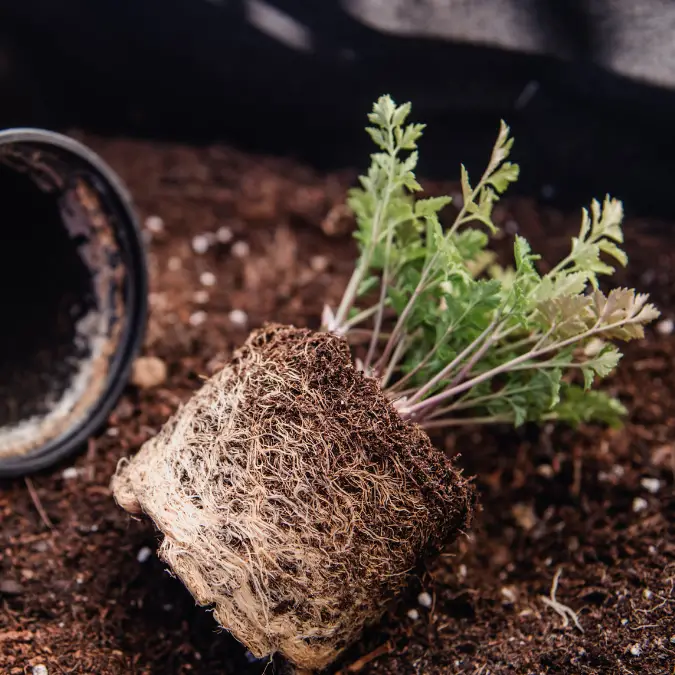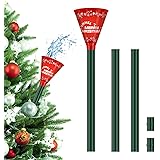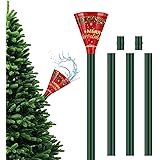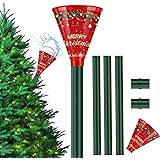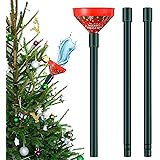If you’ve ever purchased a new plant and then discovered it’s not doing well, you may have forgot to loosen root ball of the plant. When planting a new plant, it’s essential to loosen the root ball prior to planting. Unfortunately, many gardeners forget this important step, and their plants suffer as a result.
In this blog post, we’ll discuss the consequences of forgetting to loosen the root ball and explain how to prevent it from happening in the future.
What is a root ball?
A root ball is a type of root system that plants naturally form when they are growing in the ground.
It is made up of all the tangled roots, soil, and other organic material that grow together around the base of the plant.
When a plant is being transplanted from one place to another, it is critical to loosening the root ball before replanting it in its new home. If not, the roots can become tangled and compacted, resulting in poor growth and even death for the plant.
Loosening the root ball helps to create room for the roots to spread out and take in more water and nutrients from the soil.
In addition to loosening the root ball, you should also trim away any damaged or diseased roots. Doing this will help reduce the chances of diseases spreading throughout the entire plant.
Why do you need to loosen it?
When you purchase a plant, it is usually in a container with its roots bound up into a tight root ball.
This can be damaging to the plant if left unchecked, as the roots will struggle to find oxygen and moisture in order to survive. Loosening the root ball is important for several reasons.
Firstly, loosening the root ball will allow the plant’s roots to better absorb oxygen and water from the soil. This helps to keep the plant healthy and ensure that it grows properly.
In addition, when the root ball is not loosened, the roots can become wrapped up and tangled together in an unhealthy way. This can hinder the growth of the plant, as some of its roots may not be able to reach deep enough into the soil.
When the root ball is loosened, the roots will spread out evenly, giving them room to grow and develop properly.
Finally, when a root ball is not loosened, it can become difficult for the plant to put down new roots as it grows. This can be particularly detrimental for fast-growing plants, as their roots will not be able to spread out quickly enough, and they may become root-bound.
Loosening the root ball gives them space to put down new roots and flourish.
How do you know if you’ve loosened it enough?
The easiest way to know if you’ve loosened a root ball enough is to check the number of fibrous roots and soil that has been disturbed.
If the root ball is still quite compacted, it likely hasn’t been loosened enough.
There should be some space between the roots, allowing air and water to move freely in and around the roots. If there are very few visible, disturbing roots and soil, you will need to loosen it more.
Another indication that the root ball has been adequately loosened is if the plant looks healthy and perky after being planted.
After planting, your plant should look refreshed, with new growth beginning to appear. If there is no sign of new growth or the leaves are wilting, it could be a sign that the root ball was not loosened enough.
When in doubt, it’s better to err on the side of caution and loosen the root ball more than necessary. It’s much easier to provide a healthy growing environment for your plants by loosening the root ball than it is to try to remedy an inadequate loosening after the fact.
What can you do if you forget to loosen the root ball?
If you’ve already transplanted your plant and forgotten to loosen the root ball, all is not lost. You may still be able to save the plant, but you’ll need to act quickly.
The first thing you should do is loosen the roots as best you can. Gently break up the root ball so that the roots have room to spread out. Be careful not to damage any of the roots in the process.
You can also prune back any roots that look overly long or damaged.
Next, make sure that the soil is moist and well-draining. Water deeply around the base of the plant and add a layer of mulch to help keep the moisture in the soil.
Finally, provide extra care and attention to your plant over the next few weeks. Make sure that it has plenty of water and nutrients while it adjusts to its new environment.
If possible, try to reduce stress on the plant by avoiding too much sun, wind, or heavy pruning.
With patience and careful attention, your plant will eventually recover from its transplant shock and start to thrive in its new home.
How can you prevent this from happening in the future?
One of the best ways to prevent forgetting to loosen the root ball of a new plant is to plan ahead and create a checklist of all the steps you need to take when caring for your plants.
Make sure that loosening the root ball is on your list, and check it off as soon as you complete this step.
Additionally, it can be helpful to read up on the type of plant you are bringing home so that you are aware of any special instructions or requirements that may be necessary for keeping your plant healthy.
When you first get your plant, give it some time to acclimate to its new environment before attempting to transplant it.
This will allow the roots more time to adjust and will make the transplant process easier.
Finally, always remember to use a potting mix that is specifically designed for potted plants, as this will help keep the roots healthy and provide proper drainage for your plants.
You should also water your plants regularly in order to maintain adequate soil moisture levels.
If you have just transplanted your plant, try to water it more often during the first few weeks in order to ensure the soil does not dry out completely during this important period of transition.
Always avoid overwatering as this can lead to root rot and other issues.
Lastly, if you are still having trouble maintaining the health of your plants after trying these tips, reach out to an experienced horticulturalists who can offer additional advice tailored to your specific circumstances.
Frequently asked questions (FAQs)
What is a root ball?
A root ball is the soil and roots of a plant that has been dug up from its original location. The soil surrounding the root ball helps to protect the roots, so it is important to not damage them when transferring the plant to a new pot or location.
Why do you need to loosen the root ball?
Loosening the root ball helps to ensure that the roots are able to spread out and take in nutrients from the surrounding soil. If the root ball is not loosened, the roots may not be able to reach the nutrients they need and your plant may suffer as a result.
How do you know if you’ve loosened it enough?
Generally, you should be able to easily pull apart the soil clumps around the root ball. If the soil is still too compact, gently work it apart with your fingers or a small tool.
What can you do if you forget to loosen the root ball?
If you forget to loosen the root ball, there are still some things you can do to help your plant. First, gently massage the soil with your fingers or a small tool to break up any clumps. Secondly, make sure your plant is planted at the proper depth, too shallow, and it may dry out, too deep, and it could suffer from root rot. Finally, make sure your plant has access to adequate water and nutrition.
How can you prevent this from happening in the future?
Always double-check before planting a new plant that you have loosened the root ball properly. Additionally, check that your new plant is planted at the proper depth and has access to adequate water and nutrition. Regularly checking on your plants is also important to ensure they have everything they need for good health.
Wrapping up
When planting a new plant, you had not forgot to loosen root ball before placing it into the soil. This step allows for the roots to spread out and grow quickly and healthily, rather than becoming stunted or strangled in the soil. If you forget to loosen the root ball, there are still things that can be done to save your plant, such as removing any suffocating potting mix and gently loosening the roots with your fingers.
Taking preventative steps like researching your plants’ needs and double-checking before planting can help to ensure this mistake doesn’t happen again in the future. With a little extra care and attention, your plant will be sure to thrive.
Auto Amazon Links: No products found.
Perfect Plants Christmas Tree Saver 8oz. | Easy Use Xmas Tree Preserver Food | Have Healthy Green Christmas Trees All Holiday Season
$9.97 (as of December 3, 2025 00:36 GMT +00:00 - More info- Product prices and availability are accurate as of the date/time indicated and are subject to change. Any price and availability information displayed on [relevant Amazon Site(s), as applicable] at the time of purchase will apply to the purchase of this product.
Kaiedos Christmas Tree Watering Funnel - 39 Inch Funnel, Reusable Design, Makes Watering Your Live Tree a Snap!
$14.99 (as of December 3, 2025 00:36 GMT +00:00 - More info- Product prices and availability are accurate as of the date/time indicated and are subject to change. Any price and availability information displayed on [relevant Amazon Site(s), as applicable] at the time of purchase will apply to the purchase of this product.
Christmas Tree Watering Funnel, Real Christmas Tree Water Long Funnel About 40 Inch, Trees Watering System for Water Indoor Outdoor
$15.99 (as of December 3, 2025 00:36 GMT +00:00 - More info- Product prices and availability are accurate as of the date/time indicated and are subject to change. Any price and availability information displayed on [relevant Amazon Site(s), as applicable] at the time of purchase will apply to the purchase of this product.
IPOOLTENG Christmas Tree Watering Funnel 3 Tube 1 Funnels 40 Inch - 3 Section Plastic Christmas Tree Funnel Waterer, Long Funnels for Watering Trees, Best Gifts for Your Parents to Water Tree
$15.53 (as of December 3, 2025 00:36 GMT +00:00 - More info- Product prices and availability are accurate as of the date/time indicated and are subject to change. Any price and availability information displayed on [relevant Amazon Site(s), as applicable] at the time of purchase will apply to the purchase of this product.
1 Pack Christmas Tree Watering Funnel System, 44 Inch Christmas Tree Watering Stick with Adjustable 3-Section Design, Reusable & Spill-Free, Xmas Plant Waterer Tool for Indoor and Outdoor
$16.99 (as of December 3, 2025 00:36 GMT +00:00 - More info- Product prices and availability are accurate as of the date/time indicated and are subject to change. Any price and availability information displayed on [relevant Amazon Site(s), as applicable] at the time of purchase will apply to the purchase of this product.
Cuisinart 6.5" Cast Iron Smashed Burger Press, Round Flat Edge Grill Press for Crispy Smash Burgers, Burger Tool for Grill and Griddle Accessories, for BBQs and Tailgates
$24.99 (as of December 4, 2025 16:51 GMT +00:00 - More info- Product prices and availability are accurate as of the date/time indicated and are subject to change. Any price and availability information displayed on [relevant Amazon Site(s), as applicable] at the time of purchase will apply to the purchase of this product.
Snow Joe Premium Enviro Blend Ice Melt, Green-Coated Deicer Crystals, 50 lb - Safer Melter for Vegetation, Concrete & Metals w/ Anti-Corrosion Calcium Magnesium Acetate
$32.97 (as of December 4, 2025 16:51 GMT +00:00 - More info- Product prices and availability are accurate as of the date/time indicated and are subject to change. Any price and availability information displayed on [relevant Amazon Site(s), as applicable] at the time of purchase will apply to the purchase of this product.
Muddy Mat® Shown on TV Super Absorbent Microfiber Dog Door Mat for Muddy Paws, Non-Slip Washable Pet Rug, Quick Dry Chenille Entryway Carpet, Machine Washable Indoor Outdoor mat, Grey 30"x19"
$19.95 (as of December 4, 2025 16:51 GMT +00:00 - More info- Product prices and availability are accurate as of the date/time indicated and are subject to change. Any price and availability information displayed on [relevant Amazon Site(s), as applicable] at the time of purchase will apply to the purchase of this product.
OLANLY Dog Door Mat for Muddy Paws 30x20, Absorbs Moisture and Dirt, Absorbent Non-Slip Washable Doormat, Quick Dry Chenille Mud Mat for Dogs, Entry Indoor Entryway Carpet for Inside Floor, Grey
$9.99 (as of December 4, 2025 16:51 GMT +00:00 - More info- Product prices and availability are accurate as of the date/time indicated and are subject to change. Any price and availability information displayed on [relevant Amazon Site(s), as applicable] at the time of purchase will apply to the purchase of this product.
Zevo Flying Insect Trap Official Refill Cartridges - Fits Both Zevo Trap & MAX Indoor Fly Trap - Authentic Trap+Lock Technology to Catch Gnats, House & Fruit Flys (4 Official Refill Cartridges)
$14.97 (as of December 4, 2025 16:51 GMT +00:00 - More info- Product prices and availability are accurate as of the date/time indicated and are subject to change. Any price and availability information displayed on [relevant Amazon Site(s), as applicable] at the time of purchase will apply to the purchase of this product.

